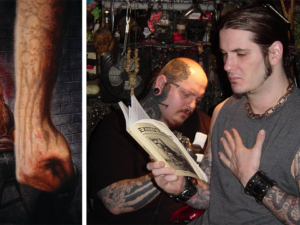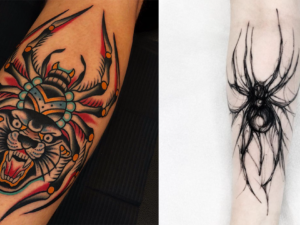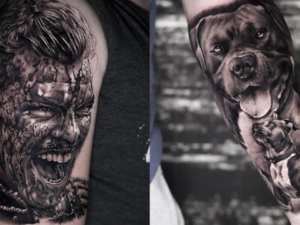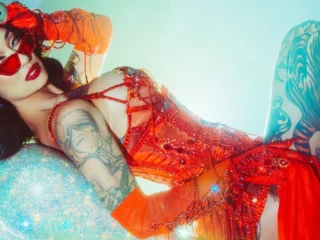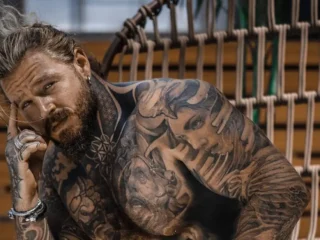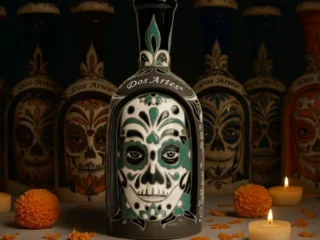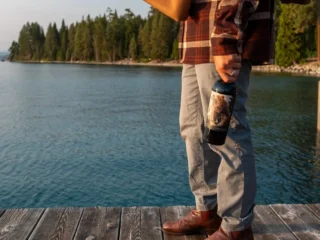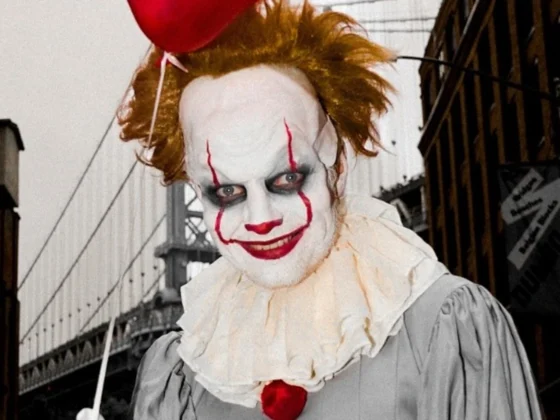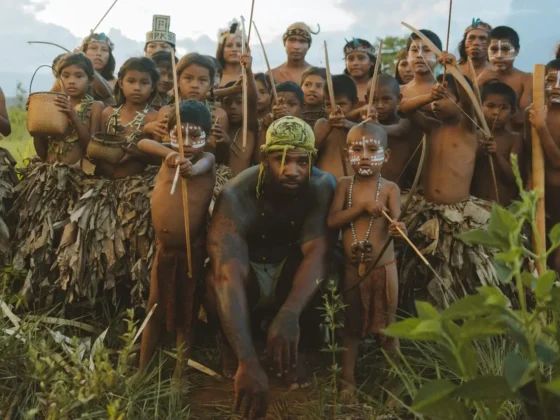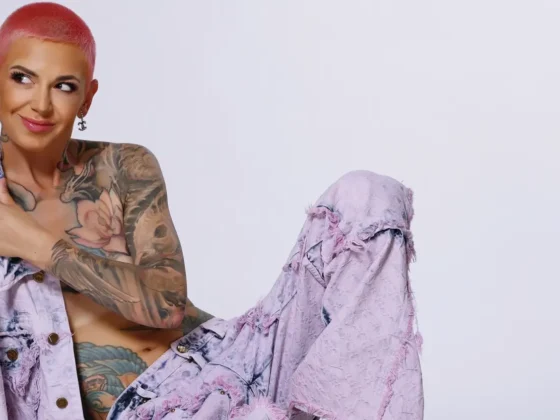Inked Mag
June 27th, 2019
Custom Bike Builder Keino Sasaki Talks Japanese Culture’s View on Tattooing, Working with Indian Larry, and Keino Cycles
“I want to keep moving up. I don't want to be known for a certain style as far as aesthetics go,” Sasaki says. “I want to move onto different things and keep experimenting with my ideas."
Custom bike builder, trained and seasoned mechanic, and fabricator and machinist, Keinosuke “Keino” Sasaki, was raised in Fukuoka, Japan — where, through his father, he lived, breathed, and bled motorcycle appreciation. At six years old, Sasaki had his first ride on the back of his father’s Yamaha XS650, recalling that it was “horrifying” not being able to see the road in front of him, and only being able to hold onto his father tightly.
When Sasaki was 13 years old, he took his first ride in the driver’s seat, where he and his brother shared a hand-me-down Yamaha TY125 dirt bike their father used to ride.
At first, Sasaki thought he wanted to pursue a career in history. With a desire for adventure, he left his hometown “to see a different world,” where he eventually chased his passion of working with custom bikes, and graduated from the Motorcycle Mechanic Institute in Arizona. Finding himself in Brooklyn, New York in 2000, he worked at Indian Larry’s shop the next year, where Sasaki swept floors, pushed bikes, and handled oil changes. Specializing in vintage custom bikes, Sasaki soon made a name for himself in the moto world, continuing to push his custom bike ideas and projects, and finally opening Keino Cycles.
Keino Sasaki is one of few custom bike builders who offer service repair and rebuilding through Keino Cycles. Sasaki’s fervor, work ethic, capabilities and credentials allow him to take on new challenges and jobs that other shops might shy away from.
“I want to keep moving up. I don’t want to be known for a certain style as far as aesthetics go,” Sasaki said. “I want to move onto different things and keep experimenting with my ideas or a customer’s ideas. If I have a style I would want it to be known for that, and I think that comes out in my work.”

What was your experience like coming from Japan to New York City?
Everything was big; the skies were big, and I remember noticing how there are all kinds of people. Where I’m from, everybody looks Japanese, you know? If you see white people, Black people, or whatever the type, in Japan, that’s a foreigner. But over here, that’s America. Everyone is different and everyone is acting normal about it. Nobody’s looking at you any differently.
How did you meet Indian Larry, and what was it like working in his shop?
It was a coincidence. I didn’t know him back then. I mean, he was a famous in a certain world, but I didn’t know where he worked at. When I first moved to New York, I had a job and a small dealership in Brooklyn, but I wanted to get into a custom motorcycle shop. So I just made an appointment with a bunch of custom bike shops in the city, and I didn’t have a computer back then, so the Yellow Pages, you know? I made a phone call and appointment and just from my resume, one of them called me back and said ‘Come work for us.’
The first day Larry was there, and I introduced myself and he said, ‘Indian, very nice to meet you.’ In my head I thought, ‘He doesn’t look like an Indian. Totally white and Caucasian guy, whatever.’ Then I saw his bike and I said, ‘You know what, I remember this bike in a magazine.’ It wasn’t an ‘Oh, that’s the guy’ kind of thing.
It was intense and fun. I learned a lot. You know, sometimes he had mood swings and whatnot. I mean, it’s a working environment. It’s not like a school. So he’s doing something else and I’m doing something else at the other side of the shop. It’s not like we were working side by side and he was showing me things. Also, I was young and didn’t have much experience, so I didn’t get to do cool stuff. I was just doing the regular, simple stuff. But little by little, I was accepted, and the environment got me into more interesting stuff. It was little by little, step by step.
What is Keino Cycles’ goal and mission?
I love what I do. I wake up in the morning just looking forward to coming to a shop. This is what I love, other than my wife and kid. I don’t have employees, so I am by myself working and doing everything I can. So this is like my ‘me’ time, everyday.
So my goal is to keep doing what I’m doing, keep doing what I love to do. That’s my mission, personally. As far as the motorcycle world goes, I get to turn my vision into reality, and do something I enjoy the most without sacrificing anything that is important. So I had to find a balance to just wanted to keep doing what I’m doing.

Will you speak on Keino Cycles’ motto of: “Pushing forward with a love of the past”?
I came up with this tagline to keep moving. I don’t want to stop. To me, if it’s like, ‘I’m the best. I know everything. I could do everything,’ and I stop, there’s no room for improvement for the future. I’m a perfectionist. If I felt I made this perfect bike, there’s no more than that. Certain people will be that way. It’s confidence, but it’s almost like an arrogance, you know? I don’t want to be like that, I want to keep going every time.
Every bike that I finish, next time, I want it to be able to do this, or do that. And I wanted to keep having that desire to do better, or newer, or do something else better. But at the same time, that’s based on my past and my experience and mistakes. That’s what I tried to say in that tagline. I cherish that experience with [Indian Larry] in that shop. At the same time, it’s safe to say I am better than who I was back then. That doesn’t mean that I hate the past, but I wanted to be better. I wanted to do more. So that’s what I mean by moving forward, pushing forward the concept of the perfect bike.
Do you think that there is truly a perfect bike?
I don’t think so. I mean, it’s all a personal thing. Internal discipline, I guess. If you think it’s perfect, there’s nothing more than that. Good for you, good for you. But I don’t feel that way and I try my best. I’m not the best, but I want to do my best and I want to keep doing and pushing. It sounds cheesy, but I think a creator needs to keep creating things. You can’t stop. You can think your bike is a perfect masterpiece and be satisfied with that, and that’s good for you, but not for me.
Why did you decide to host workshop classes out of your shop?
Every once in a while I would have people wanting to learn, intern, or whatnot. But I don’t really teach them right away in that kind of environment. If you want to intern, you’ve got to do other stuff. Other stuff that you get to witness a little bit. But just because you’re working for me doesn’t mean I’m going to side by side show you. That’s not why I came here. If you want to learn from me, you have to pay your dues and to see and learn.
So people wanted to learn, so I thought I might as well create the workshop and organize my thoughts and methods, and I might as well make a living as well as pass it onto other people that wanted to learn, so I can more focus on one day. My passion is sheet metal right now, and I want to do more, but I teach the basics and the ‘this is the how you do this and that,’ and what I think they should be doing.
Give us a tour of your tattoos.
Well, I only have two sleeves. The left is Diego Mannino from Daredevil Tattoo in the city, and the right side is Troy Denning from Invisible, and he did my chest, and I’ve just started my back with Tebori. I was always into the Japanese style, even though where I grew up, the Japanese traditional-style tattoo brings the idea of the Yakuza. Hardcore gangs. But at the same time, I always loved those Japanese-style paintings and all that stuff. Something about it I admired.

Do you come from a tattooed family?
No. My parents kind of knew that was going into it, especially when I moved to New York. When my dad was around, he and my mom came to New York to see me, and I took them to my shop. Everybody had tattoos, so they knew this is how I was going to get someday. I was pretty old to get into tattoos, I waited and waited because I didn’t want to make a mistake, and I didn’t have much money anyways. So I started big with my Diego [Mannino] arm, 10 years ago.
Do you think the Japanese culture’s view on tattooing is changing for the better or for the worse?
I’ve been living in the states the past 20 years, so I can’t really tell what’s going on in Japan. I don’t know much, but I noticed that a lot more people — or younger people — have tattoos. Especially in visible areas. I think it’s getting to be more accepted there, but only in city areas. But if you go to a less-crowded and less-populated area, they’re not used to tattoos.
A few years ago, I went back to my hometown and met up with a friend and went to a restaurant. It is not a city area, it’s more suburban. My friend and I walked into the restaurant and the restaurant is empty. It was the summertime so I’m wearing a t-shirt, and they said, ‘Sorry, reserved. Private party today.’ We went to the next one. Same thing. I realized, ‘Right, maybe I should have worn the long sleeves.’
Editor's Picks
Paul Booth Illustrates Cover for Pantera Graphic Novel
The revered tattoo artist created a cover for a graphic novel celebrating the 30th anniversary of “Vulgar Display of Power”
Scary Spider Tattoos
Spiders are terrifying, yet for some reason people sure do love to get tattoos of them


